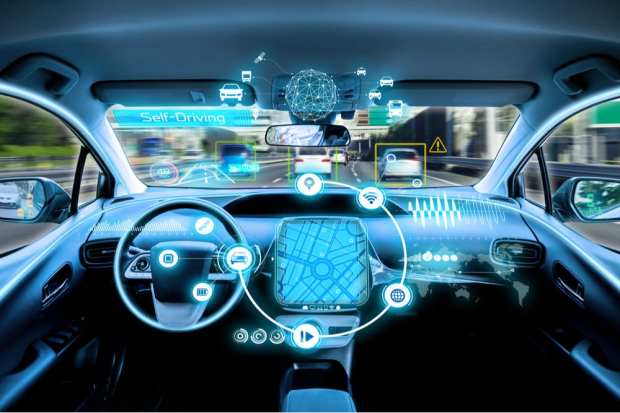Autonomous Vehicles Run Into Serious Roadblocks

Sometimes, when an idea – especially one that has long stewed in popular imagination – makes serious and well-funded moves toward becoming reality, the excitement becomes almost irresistible, and the idea takes on a sense of immediacy and inevitability.
That’s been the case over the past year or so for self-driving cars. Sure, skepticism about the coming age of autonomous transportation was always out there. But as Uber, Google sibling Waymo, major automotive manufacturers and other companies poured money into the technology and announced fresh tests, a sense of optimism that the autonomous future was just around the corner continued to grow, with expectations occasionally approaching the level of hype.
New Trends
Things are changing, at least according to new reports and some relatively fresh observations. The skepticism is rising – not about the coming of autonomous vehicles, but the timetable. And it seems plausible that 2019 will go down as a year during which the brakes were applied to the idea that mainstream acceptance of autonomous vehicles – which depends not only on the cost of the technology but on driving culture in general – will begin in the coming years instead of the coming decades.
The latest evidence of that comes from a recent New York Times report noting that “a year ago, Detroit and Silicon Valley had visions of putting thousands of self-driving taxis on the road in 2019, ushering in an age of driverless cars.” Now, however, “most of those cars have yet to arrive – and it will likely be years before they do. Several carmakers and technology companies have concluded that making autonomous vehicles is going to be harder, slower and costlier than they thought.”
Indeed, the report quoted Ford CEO Jim Hackett as saying, “We overestimated the arrival of autonomous vehicles.” That doesn’t mean Ford or other automotive and tech players are giving up on autonomous vehicles – but in many cases, they are reconsidering their efforts and even changing plans. For Ford, that means a fresh effort involving Volkswagen and autonomous vehicle technology from Argo AI. The immediate goal? According to the newspaper, to deploy such technology in service of “ridesharing services in a few urban zones as early as 2021,” which in turn could pave the way for driverless vehicles in the future.
As that and other recent reports have noted, the technology needed for that autonomous future – technology that goes well beyond the cars and trucks to include roads, maps and other parts of the larger ecosystem – is proving more complex than many in the industry had apparently anticipated. Think about all the unexpected hazards faced in your own drive – challenges that self-driving vehicles have to navigate around. Regulators will have to set new rules – and the pace of regulation is set by not only the pace of technological progress, but also political trends.
And that’s only for starters.
Human Factor
When it comes to driving – as is the case with pretty much everything else that involves payments and commerce and basically all technology – human behavior, culture and tradition play massive roles.
And human behavior, at least in general, is not yet ready for mainstream use of autonomous vehicles.
In fact, PYMNTS research has documented a significant reluctance among consumers to embrace autonomous vehicles. That reluctance exists alongside the general enthusiasm shown for less advanced “connected car” technology – which requires the participation of drivers – and the commerce opportunities it offers.
According to the PYMNTS/Visa Digital Drive report, for instance, only about 14 percent of consumers are “extremely interested” in owning or using an autonomous car, with about 21 percent saying they are “very interested,” and 23 percent are “somewhat interested.”
That’s a significant challenge for a significant area of real and potential commerce and payments. After all, every weekday morning, 135 million U.S. adults drive a car to work, with commutes ranging from as little as 15 minutes to over an hour, PYMNTS research shows. During this daily grind, motorists are driving $212 billion in commerce. That’s a huge opportunity for the emerging technology of automobiles – less time focused on driving means more time for shopping, to put it in the simplest terms. And the more connected a vehicle is – whether fully autonomous or not – that paves a smoother road for more commerce from consumers’ cars and trucks
None of this fresh skepticism – pessimism? – is meant to suggest that autonomous vehicles are headed toward a dead end. Delivery service providers are keenly interested in the technology, as are freight haulers (some of the motivation coming from a U.S. trucker shortage that promises to get worse).
And major automotive and tech firms continue to pursue autonomous advances. Among the latest examples is Waymo, the self-driving unit of Alphabet. It has not only launched a partnership with Jaguar Land Rover, but recently has started testing self-driving Jaguar I-Pace vehicles on public streets.
Work will certainly continue, but certain parts of the autonomous future may be further out than once expected.
